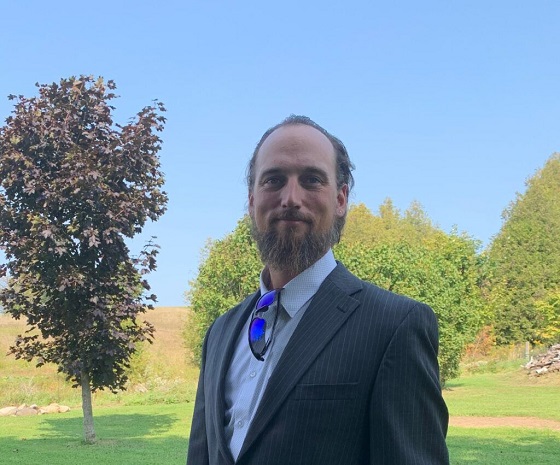2025 Federal Election
Election 2025: The Great Rebrand
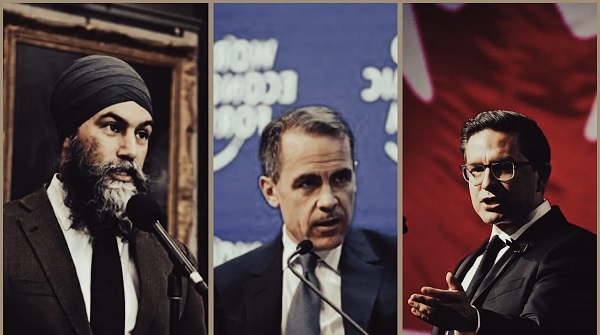
Same Swamp, New Faces — A Banker, A Backup Dancer, and the Guy Who Called It All Along
So yesterday in Canada, something remarkable happened. The Liberals—yes, those Liberals—called a snap election, and if you’ve been even half-awake over the past decade, you already know what that means. When the Liberal Party in Canada says “emergency,” it never actually means “emergency.” It means opportunity. For them. And for them only.
Mark Carney, the freshly minted Prime Minister—and, let’s be honest, Justin Trudeau with a slightly different haircut—stood at a podium yesterday morning and announced to Canadians that they were in the middle of the “most significant crisis of our lifetimes.” Was he talking about inflation? Out-of-control immigration? Broken infrastructure? Nope. He was talking about Donald Trump. Again.
That’s right. According to Carney, who just last year was managing money for billionaires and holding court at Davos, Canada is on the verge of collapse because Donald Trump slapped tariffs on steel and aluminum. And so naturally, Carney’s solution wasn’t to meet with Trump, or negotiate, or push back through diplomacy—it was to dissolve Parliament and call an election. Because, he says, “President Trump claims that Canada isn’t a real country. He wants to break us so America can own us. We will not let that happen.”
Now, pause and think about that. Not only is that an outright cartoon version of reality, it’s delivered in exactly the same breathy, fake-dramatic, overly rehearsed tone that Canadians have been forced to endure from Justin Trudeau for nearly a decade. You could close your eyes, hear Carney speak, and think—oh, there’s Justin again. The same cadence. The same halting pauses. The same sanctimonious, over-coached delivery. Gag. They’re not even trying to sound different.
And that’s what makes this so offensive. They took Trudeau’s empty suit, shoved in another Bay Street insider, gave him the same script, and now they’re pretending it’s a new era. Spoiler: it’s not. It’s just the same swamp, rebooted with a different narrator.
Now, let’s talk about what Carney actually did in his first week as Prime Minister. Because it’s telling. He kicked out Chandra Arya, a sitting Liberal MP who had the audacity to run in the leadership race. Arya has been in Parliament for nearly a decade, and just like that, he was removed by a secretive party committee. Why? Carney wanted the Nepean riding for himself. And now he’s running there. No nomination contest. No vote. No accountability. Just a velvet-glove power grab by Canada’s ruling class. Trudeau couldn’t have done it better. Or, frankly, more shamelessly.
And then—this is the best part—Carney starts copying Conservative policies word for word. You can’t make this up. Conservatives said axe the carbon tax? Carney axes it. Conservatives said remove GST on new homes? Carney removes it—for first-time buyers, of course, to maintain the illusion of difference. Conservatives opposed the capital gains tax hike? Carney kills the increase and says it’s to “reward builders for taking risks.” That’s a quote. From Trudeau’s former economic advisor.
So just to recap: they prorogued Parliament to hold an internal leadership race during what they now claim is a national economic emergency. Then they oust a sitting MP to parachute their new leader into a safe seat. Then that leader—who spent years on the record defending carbon taxes, wealth taxes, capital gains increases, and every other progressive scheme—miraculously converts to Poilievre-ism in under ten days. All while telling Canadians that he represents stability.
It’s insulting. And it’s obvious. But it only works if Canadians forget how we got here. If they forget that this is the same party that spent the last ten years telling them inflation wasn’t real, that housing was affordable if you just tried harder, and that freedom of expression was a threat to democracy.
Carney stood there and said, “We are stronger together,” and I nearly choked. Because you know who else said that, constantly, while dividing the country by class, speech, region, and vaccination status? Justin Trudeau.
Mark Carney isn’t here to save Canada. He’s here to save the Liberal Party from the consequences of its own failures. And if they cared this much about trade with the U.S., they wouldn’t have shut down Parliament to hold a leadership contest. They would have done their jobs.
Conservatives: Because Copying Us Is All the Other Parties Have Left
Because not even 12 hours later, Pierre Poilievre walked onto a stage in Toronto—and it wasn’t just any event. The room was packed. And I don’t mean in the polite, stage-managed “standing room only” kind of way that the media uses to make a half-empty gymnasium look respectable. I mean jammed. Wall to wall. Flags waving, signs flying, real energy. There was no teleprompter glass, no softly lit hardwood floor and marble backdrop. Just thousands of people, jammed into a venue, ready to hear a man speak who—love him or not—is not pretending to be someone else.
And that’s what stood out. Because just a few hours earlier, the guy we’re supposed to believe is “Canada’s new leader” was up there imitating Trudeau like he was auditioning for a Heritage Minute. Meanwhile, Pierre Poilievre stepped up to the mic in front of a roaring crowd and gave the kind of speech you only give when you know the system is broken—and you’re done pretending it’s not.
He wasted no time. “They are replacing Justin Trudeau with his economic advisor and handpicked successor,” he said, with just the right amount of disbelief. “They are the same Liberals—with the same ministers, the same MPs, the same advisors, the same policies—and even today, making the same promises they’ve been breaking for over ten years.” And that was the shot. Because it’s true. You can swap the man at the podium, but if the script is the same, what exactly has changed?
And this crowd—Toronto of all places, once assumed to be off-limits for conservatives—ate it up. Not because Poilievre was delivering poetry. Not because he was spinning fantasy. But because he was naming the thing everyone else is afraid to say: that Carney is a continuation, not a correction. That the Liberals didn’t bring in a fixer—they brought in the architect of the mess.
He dug in hard on the hypocrisy. Carney signs a paper saying he’s axing the carbon tax, but in the next breath, he’s introducing an industrial carbon tax—one that, as Poilievre pointed out, will slam Canadian steel, fertilizer, aluminum—basically anything that still gets built in this country. And while Carney was trying to convince reporters that “big companies are not producing things that Canadians consume,” Poilievre rattled off a list—cars, microwaves, dishwashers, ovens, tools. “Do you use any of those things?” he asked the crowd. The answer was obvious.
This wasn’t some campaign rally gimmick. He was hitting on what people actually feel every time they check out at the grocery store, or look at their gas bill, or walk past an empty lot that could’ve been housing, but isn’t. And he tied it back—not to abstract ideology, but to specific betrayal. “Only six days after Trump threatened tariffs on our country,” he said, “Mark Carney moved his company’s headquarters to New York. Trump’s hometown.”
It landed because it was real.
He even took a swing at the latest attempt by Liberals to soft-peddle their record: making election promises they’ve already broken in the past. “Mr. Carney,” he said, “was literally repeating the election promise about income tax that Justin Trudeau and the Liberals broke ten years ago.” The same people. The same spin. “Same advisors, same strategic planners, same scriptwriters,” he said. “Even the same Gerald Butts.”
He mocked the contradictions. Carney as the man who opposed Canadian pipelines while his company invested billions in foreign fossil fuels. Carney as the guy calling for economic patriotism while quietly shifting money, assets, and power out of Canada. And for a man whose supporters frame him as a high-minded global statesman, Poilievre made him look like something much more familiar: just another Liberal insider, too comfortable to care about consequences.
Now, let’s be clear. This wasn’t some flawless sermon. Poilievre still leans heavily into slogans. “Bring it home.” “Common sense.” “Canada First.” But that didn’t matter. Because what mattered was that the people in that room knew he wasn’t acting. They knew he was angry. And they are too.
You could feel it. And if this momentum holds, it’s not going to matter how many new faces the Liberals roll out. Canadians aren’t voting on charisma anymore. They’re voting on pain. On price tags. On broken promises. And right now, the guy they sent out to fix the mess is being called out—loudly—as the man who helped make it.
NDP: From Enabler to Opponent
So after a packed-out Conservative rally where Poilievre lit up the stage and torched the Trudeau–Carney regime for everything from exploding deficits to a carbon tax dressed up in new packaging, we got this. Jagmeet Singh, the man who kept Justin Trudeau’s tired, collapsing government on life support for nine years, suddenly wants you to believe he’s the resistance.
You almost have to laugh.
There he was, standing in front of a carefully arranged room—less electric, more echo chamber—launching a campaign not against the very government he propped up, but against the man he helped install.
Jagmeet Singh opened his speech with the usual acknowledgments and land statements, moved quickly into identity platitudes, and then took a sharp turn into fantasy: painting himself as the anti-establishment warrior who “fought for dental care,” “delivered pharmacare,” and “forced the government to act.”
But hang on a second—what government was that again?
Oh right. The one he kept alive through confidence votes, budget approvals, and joint legislative deals. The one that spent the last decade inflating the housing market, ballooning the deficit, and silencing dissent. The government of Justin Trudeau. Which, as of this month, is now the government of Mark Carney, Trudeau’s handpicked successor.
You see where this is going?
Singh stood on that stage slamming Mark Carney—saying “he can’t be trusted,” that he “helped banks and investors profit off the housing crisis,” and that “he’s spent his career working for billionaires.” All true. But where was that spine the last nine years when he was voting to keep those exact same people in power?
Let’s not forget: Singh voted in favor of Trudeau’s emergency powers during the trucker convoy. He backed the carbon tax increases. He played defense every time the Liberals stumbled through scandal, censorship bills, and failed green policies. If Mark Carney is the wrong man to lead, then so was Justin Trudeau—and Singh stood right behind both of them, nodding along and calling it “progress.”
Now he wants to pretend he’s the alternative?
At one point, Singh even called Carney’s Canada a “house with a leaky roof,” and Poilievre’s vision a “cracked foundation.” He said, “neither will hold up when the storm hits.” But here’s the thing—he built the first house, brick by brick, with Trudeau. And now he wants credit for warning that it’s collapsing.
He also claimed he’s “the only federal leader not endorsed by Trump or Elon Musk.” Which would be hilarious if it wasn’t so desperate. That’s not a policy position—it’s a cry for relevance. When your platform is crumbling, just scream “Trump” loud enough and hope no one asks how you voted in Parliament last month.
Bottom line? Jagmeet Singh wants to run against a government he enabled, a system he reinforced, and a crisis he helped fund. He can’t walk into this election draped in the orange cape of the working class while pretending his fingerprints aren’t all over the Liberal disaster Canadians are living through.
Final Thoughts
So here we are. The stage is set. The actors are in position. And Canadians—God bless them—are being asked to choose between three brands of nonsense, each more insulting than the last.
Option one: Justin Trudeau 2.0—Mark Carney. The Liberals’ idea of change is hiring the guy who advised the last one. If that sounds familiar, it should. It’s like firing the drunk pilot, then handing the controls to the guy who told him to hit the throttle. Carney spent his career bouncing between central banks and billion-dollar boardrooms, lecturing working people about “sustainability” while padding portfolios in Manhattan. But now—suddenly—he’s wearing rolled-up sleeves, talking about “the middle class,” and reading lines from Pierre Poilievre’s economic playbook like he just discovered inflation existed. The best part? He delivers it all in that same Trudeau tone—breathy, performative, like he’s always on the verge of tears because he just cares so much. Gag. They didn’t even give him a new script. Just a new face, same puppet strings.
Option two: Jagmeet “I Have No Shame” Singh. This guy. He spent nine years keeping the Trudeau government alive—nine years voting for their budgets, defending their scandals, rubber-stamping their lockdowns, mandates, censorship bills, and everything else that turned this country upside down. But now that the Liberals slapped a different face on the same failing government, Singh wants you to believe he’s suddenly the resistance. Like we all forgot he was Trudeau’s human crutch in Parliament. “We delivered dental care,” he says. Buddy, you delivered Trudeau. Over and over again. The only thing Jagmeet Singh has resisted is accountability.
And now he wants to tell you Carney can’t be trusted? That he’s a Bay Street elitist? You voted for him. You kept his party in power. Spare us the late-stage conversion. You don’t get to spend nine years enabling a political dumpster fire and then run from the smoke like you just smelled it. It’s pathetic. And more importantly, it’s insulting.
Option three: Pierre Poilievre. Not perfect. Not polished. But also? Not pretending. He’s not fake crying at a podium. He’s not reciting script lines passed down from Liberal focus groups. He’s not flipping on policy every 72 hours. He’s telling Canadians the system is broken, and he’s naming names. He’s naming Carney. He’s naming Trudeau. He’s naming the insiders, the lobbyists, the international finance guys who’ve been running this country like their own ATM for the last decade.
And what are the Liberals doing? Stealing his policies. Axe the tax? Carney now says he’ll axe it. GST off homes? Carney’s on board. Capital gains hike? Poof—canceled. You know what that tells you? They know what they did. They know he’s right. And instead of admitting it, they’re plagiarizing the guy they called “dangerous.”
So what are we voting for?
We’re voting to find out just how stupid they think we are.
Because this isn’t just an election—it’s a referendum on whether Canadians have the memory span of a fruit fly. Whether we’re going to look at a Trudeau clone in a tailored suit and say, “Yes, that’s different.” Whether we’re going to let the guy who voted for all of it now tell us he’s the only one who can fix it. And whether we’re going to believe, for even one second, that the party that gave us this mess deserves one more try.
Subscribe to The Opposition with Dan Knight .
For the full experience, upgrade your subscription.
2025 Federal Election
NDP’s collapse rightly cost them official party status
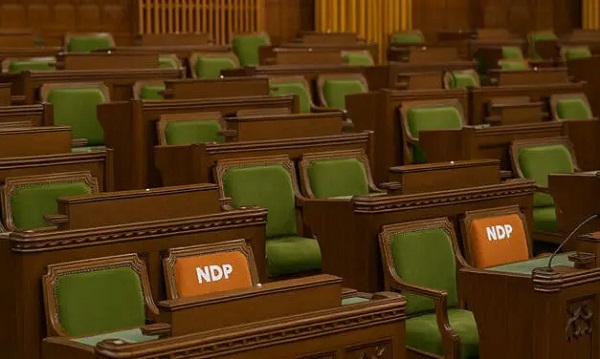
This article supplied by Troy Media.
 By Michael Taube
By Michael Taube
Official party status requires 12 seats. The NDP got seven. End of story
Rules are rules.
That, in a nutshell, is why the NDP wasn’t granted official party status in the House of Commons on Monday. Prime Minister Mark Carney and the
Liberals, to their credit, made the right decision.
Let’s examine why.
The 1963 Senate and House of Commons Act passed an amendment that gave an annual allowance to party leaders other than the prime minister and
leader of the Opposition. In doing so, the Canadian government had to establish what constitutes a “political party.” The definition they came up with was a sensible one: it had to have a “recognized membership of 12 or more persons in the House of Commons.”
This important amendment is still used today.
The NDP fell from 24 to a paltry seven seats in last month’s federal election. (There are a total of 343 seats in the House of Commons.) They finished with 1,234,673 votes, or 6.29 per cent, which was behind the Liberals, Conservatives and Bloc Québécois. Party leader Jagmeet Singh, who had represented the former Burnaby South riding since 2019, finished a distant third in the newly created Burnaby Central riding and resigned.
The NDP’s seven seats is well below the 12-seat requirement needed for official party status. This means Canada’s socialist alternative won’t be able to ask questions in the House of Commons and will lose out on money for research purposes.
Or, to put it another way, they’re plumb out of luck.
Hold on, some people said. They pointed out that the NDP’s seat count and popular vote only plummeted because many progressive voters backed Carney and the Liberals as the best option to counter U.S. President Donald Trump and his tariffs. They felt that the NDP’s long history as a champion for unions and the working class should count for something. They suggested there should be an exception to the rule.
Guess what? They’re wrong.
This is the worst election result in the party’s history. Even its predecessor, the Co-operative Commonwealth Federation (CCF), did marginally better in its first campaign. The CCF won seven out of 245 seats—and earned 410,125 votes, or 9.31 per cent—in the 1935 election. Party leader J.S. Woodsworth, who had represented the riding of Winnipeg North Centre as an Independent Labour MP since 1925, comfortably held his seat.
Meanwhile, this won’t be the first time they’ve ever lost official party status.
The NDP dropped from 43 to nine seats in the 1993 election. It was a dismal showing, to say the least. There was a suggestion at the time that then-party leader Audrey McLaughlin, the first woman to lead a party with political representation in Canada’s House of Commons, deserved a better fate. While the NDP certainly came closer to achieving the 12-seat requirement in this particular election, Prime Minister Jean Chrétien and the Liberals decided against granting them official party status.
Why? As I mentioned earlier, rules are rules.
Then again, British pilot Harry Day notably told his fellow flying ace Douglas Bader in 1931, “You know my views about some regulations—they’re written for the obedience of fools and the guidance of wise men.”
Does this mean that individuals and organizations who follow rules are, in fact, fools? Not at all. While certain rules in a liberal democratic society can range from slightly questionable to utterly ridiculous, they’re usually put in place for a specific purpose.
In the case of the House of Commons, it’s to ensure that a bar has been set with respect to political representation. Is 12 seats the right number? That’s difficult to say. It certainly prevents small protest parties and one-issue parties that unexpectedly win a tiny number of seats in an election from acquiring power and status right off the bat. They need to win more seats and grow in size and stature to reach a point of respectability. Most of them never reach this point and disappear while others float in a constant state of mediocrity like the Green Party of Canada. ’Tis the nature of the political beast.
One final point. If Singh and the NDP had reached double digits in total number of seats in 2025, a solid case could have been made in favour of official party status. If they had finished with 11 seats, it would have almost been a lock. Neither scenario ultimately materialized, which is why Carney and the Liberals did exactly what they did.
Michael Taube is a political commentator, Troy Media syndicated columnist and former speechwriter for Prime Minister Stephen Harper. He holds a master’s degree in comparative politics from the London School of Economics, lending academic rigour to his political insights.
Troy Media empowers Canadian community news outlets by providing independent, insightful analysis and commentary. Our mission is to support local media in helping Canadians stay informed and engaged by delivering reliable content that strengthens community connections and deepens understanding across the country.
2025 Federal Election
Judicial recounts give Conservatives 2 more seats, keeping Liberals short of majority
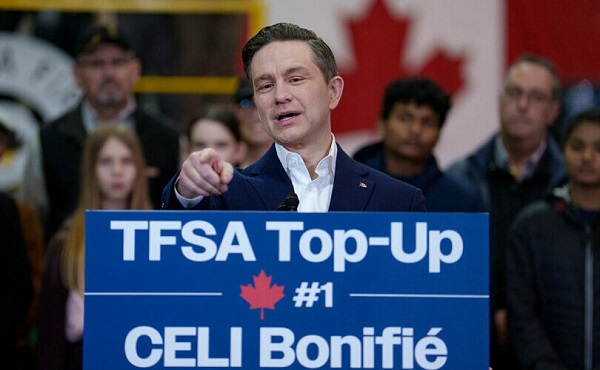
From LifeSiteNews
After a judicial recount, Conservative candidate Kathy Borrelli has officially won over Liberal incumbent Irek Kusmierczyk, in the Ontario riding of Windsor-Tecumseh-Lakeshore.
Judicial recounts from the 2025 federal election have given the Conservative Party two new seats, with one candidate winning by just four votes.
After a judicial recount, Conservative candidate Kathy Borrelli has officially won over Liberal incumbent Irek Kusmierczyk, in the Ontario riding of Windsor-Tecumseh-Lakeshore.
Borrelli got 32,090 votes, with Kusmierczyk getting 32,086 votes, and NDP candidate Alex Ilijoski getting 4,240 votes.
In the Newfoundland riding of Terra Nova-The Peninsulas, Conservative candidate Jonathan Rowe beat out Liberal Anthony Germain by just 12 votes after a recount with the initial result showing a Liberal victory.
The new election results mean the Conservatives now have 144 seats with the Liberals at 169, three short of a majority.
Judicial recounts are automatically triggered when the margin of victory for a candidate is less than 0.1 percent of valid votes.
While these recounts have favored the Conservatives, others have gone in the Liberal Party’s favor.
A May 16 judicial recount switched the southern Ontario riding of Milton East-Halton Hills South to the Liberals with a 21-vote victory over the Conservatives.
Overall, the election results have been a big blow to the Conservative Party, which on top of losing the election also saw its leader, Pierre Poilievre, fail to win his long-held seat. However, Poilievre is expected to run in a yet-to-be-announced by-election in Alberta to reclaim a seat in Parliament.
-

 Alberta10 hours ago
Alberta10 hours agoCOWBOY UP! Pierre Poilievre Promises to Fight for Oil and Gas, a Stronger Military and the Interests of Western Canada
-

 Alberta1 day ago
Alberta1 day agoAlberta Next: Immigration
-
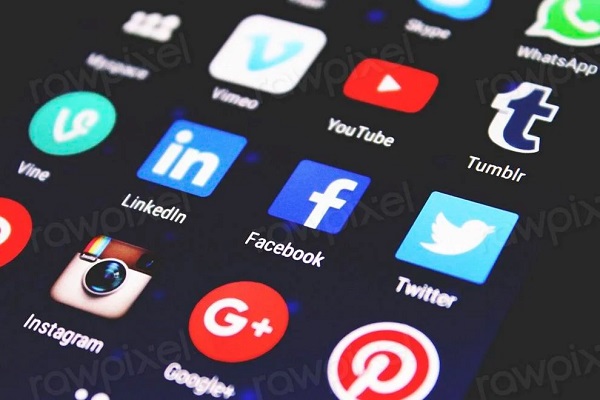
 Business2 days ago
Business2 days agoThe Digital Services Tax Q&A: “It was going to be complicated and messy”
-
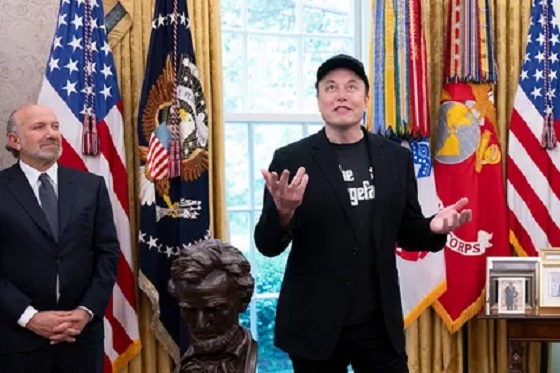
 International2 days ago
International2 days agoElon Musk forms America Party after split with Trump
-
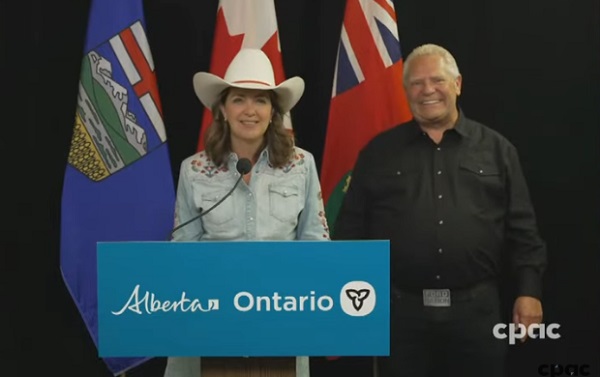
 Alberta11 hours ago
Alberta11 hours agoAlberta and Ontario sign agreements to drive oil and gas pipelines, energy corridors, and repeal investment blocking federal policies
-

 COVID-1914 hours ago
COVID-1914 hours agoFDA requires new warning on mRNA COVID shots due to heart damage in young men
-
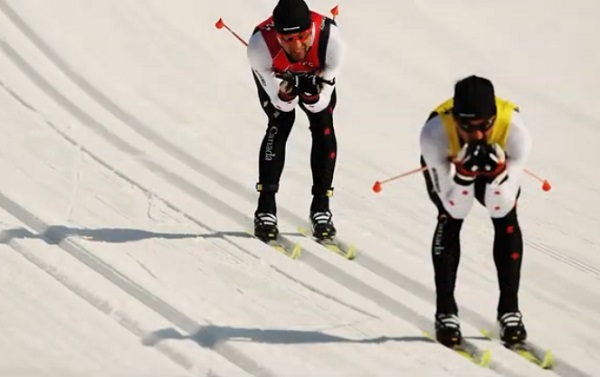
 Alberta Sports Hall of Fame and Museum1 day ago
Alberta Sports Hall of Fame and Museum1 day agoAlberta Sports Hall of Fame 2025 Inductee Profiles – Para Nordic Skiing – Brian and Robin McKeever
-
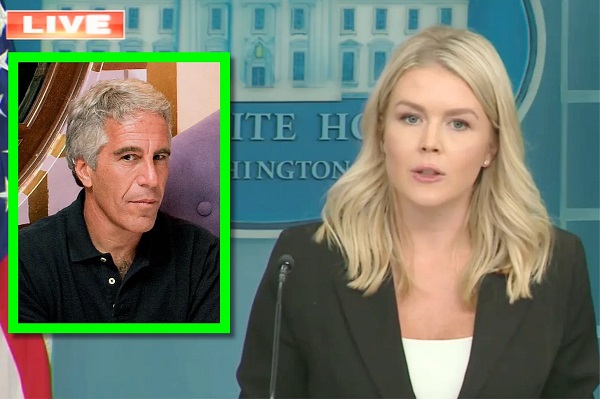
 Crime11 hours ago
Crime11 hours agoEyebrows Raise as Karoline Leavitt Answers Tough Questions About Epstein


